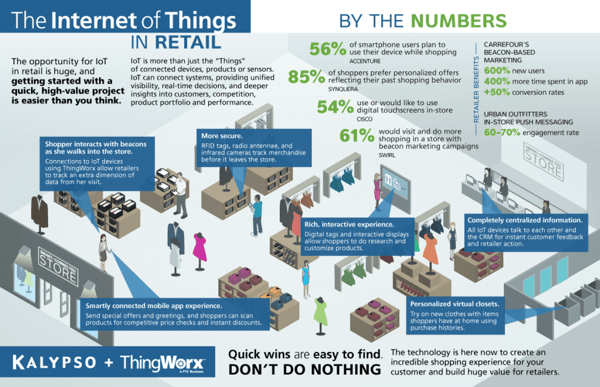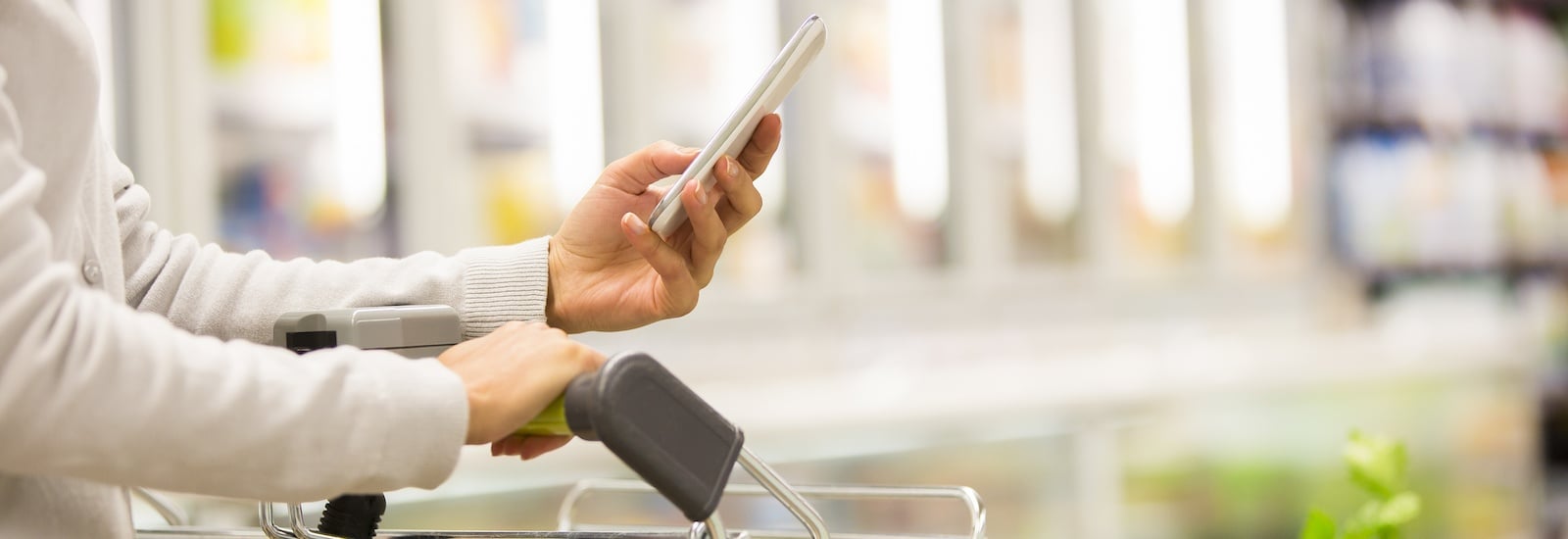The concept of the internet of things (IoT) is here to stay and continues to be a hot topic across a range of industries and in our day to day lives. IoT has a range of implications and benefits, depending on business and industry. In this article, we dive in to three of the most significant future applications of the retail sector.
- Using people flow data to optimise the store layout
In the past, retailers had to invest a lot of resources into time consuming and often inaccurate surveys about how their customers used and behaved in their store. Nowadays, with smartphones and WiFi or beacons, shop managers can get accurate information about customer flows around the store and use the information to optimise the store layout and draw attention to “dead areas”. - Boosting customer loyalty through proximity marketing
Using the same technology as in the example above, retail stores can send discount coupons to customers based on their actual location in a store or based on their previous buys. This use of IoT is already used across a wide range of sectors, the retail industry being one of them, but we believe that we have only just seen the tip of the iceberg, when it comes to proximity marketing and push messaging. - Automated inventory management
Whilst the two examples above are already being implemented and used across some of the more innovative retail stores in the world, the idea of using computer technology and IoT to automatically restock empty shelves in the supermarket is still somewhat of an alien idea to many retail chains. None-the-less, Amazon has been using robots to automatically restack empty warehouse shelves for quite some time, and there is no doubt in our minds, that this trend and use of IoT will spread and become widely used across the retail industry in the near future.
The infographic below, although published in 2015 by Viewpoint, pinpoints some of the other applications and use cases of IoT in retail.

What is “The Internet of Things”?
A lot of us use a wide range of modern tech and marketing terms in our daily lives but when it all boils down to it, we are oftentimes unable to explain what they actually mean. IoT is for many of us, one of those terms, so let’s dive a little deeper into what it actually stands for.
There is a lot of complexity around the term but let’s try to stick to the basics. Jacob Morgan, a Forbes contributor puts it this way: "Simply put, IoT is the concept of basically connecting any device with an on and off switch to the Internet (and/or to each other). This includes everything from cellphones, coffee makers, washing machines, headphones, lamps, wearable devices and almost anything else you can think of." Analysts and experts estimate that by 2020, there will be between 26 and 100 billion connected devices in the world.
Some of the more fun examples of how this could impact our day to day lives is our fridge being able to order milk and eggs from an online grocery store when we are low, or our car sending a message to our friends saying we will be 10 minutes late to a scheduled meeting due to heavy traffic. On a higher level, IoT can be used to optimise cities through improved and automated waste collection and by helping us understand how we work and live. It’s easy to see why IoT is such a hot topic these days, when you look at the endless possibilities and applications and it will be interesting to see how it will affect our world in the near future.
May 3, 2017



.png)